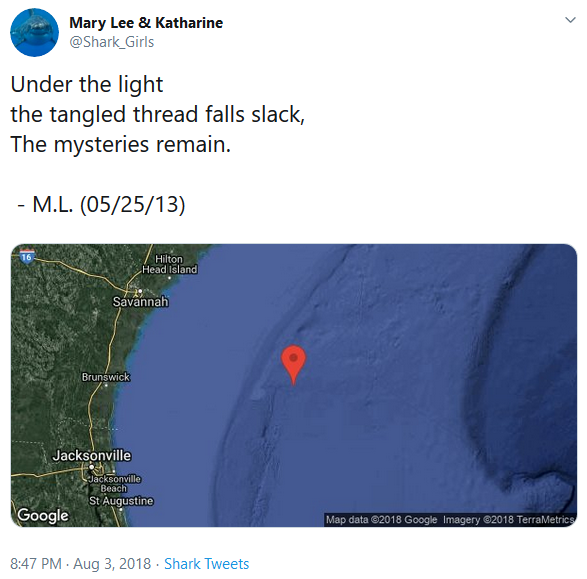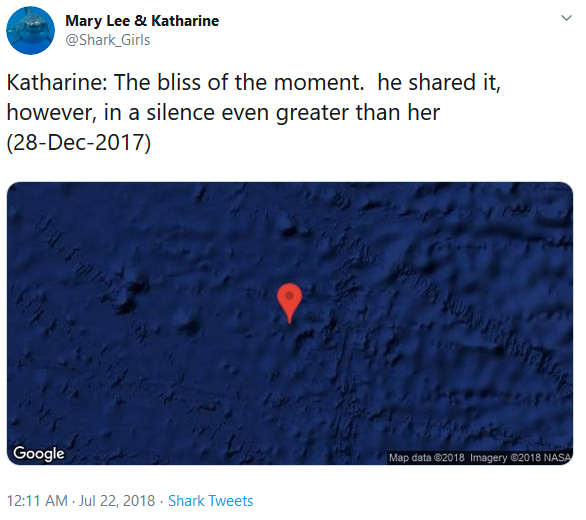I don’t want to get into everything that’s broken with Twitter and has been for a long time. I don’t even especially want to get into that small slice of Twitter that was once important to me and is broken, which is its creative bot-making potential. I’ve written about bots already once or twice, back when I was more hopeful than I am these days.
I used to make bots for Twitter. At the peak I had around 50 bots running at once, some poetry, some prose, some political, and all strictly following Twitter’s terms of service. I was one of the bot good guys.
When I say I made bots “for Twitter” I mean that two ways. One, I made bots designed to post to Twitter, the way a tailor cuts a suit for a specific customer. I made bespoke bots. Artisanal bots, if you will.
But two, I made bots for Twitter, as in I provided free content for Twitter, as in I literally worked, for free, for Twitter. You could say it was mutual exploitation, but in the end, Twitter got the better deal. They got more avenues to serve ads and extract data, and I’m left with dozens of silly programs in Python and Node.js that no longer work and are basically worthless. I’m like the nerdy teen in some eighties John Hughes movie who went to the dance with the date of his dreams, and she leaves him listless on the gymnasium wall while she goes off dancing with just about everyone else, including the sadistic P.E. teacher.
But, hey, this isn’t a pity party! I said I wasn’t going to go into the way Twitter made it really difficult to make creative bots! But trust me, they did.
Instead, I thought it’d be fun to talk about all the other things that are broken, besides Twitter! And I’m going to use one of my old Twitter bots as an example. But, this is not about Twitter!
So this is @shark_girls:

I’ve written before about how @shark_girls works. There are these great white sharks tagged with tracking devices. A few of these sharks became social media celebrities, though of course, not really, it was just some humans tweeting updates about the sharks. I thought, wouldn’t it be cool to give these sharks personalities and generate creative tweets that seemed to come directly from the sharks. So that’s what I did. I narrativized the raw data from these two great white sharks, Mary Lee and Katharine. Mary Lee tweets poetry, and shows where she was in the ocean when she “wrote” it. Katharine tweets prose, as if from a travel journal, and likewise includes a time, date, and location stamp:

To be clear: Mary Lee and Katharine are real sharks. They really are tagged with trackers that report their location whenever they surface longer than 90 seconds (the time needed to ping three satellites and triangulate their latitude and longitude). The locations and dates @shark_girls uses are lifted from the sharks’ tracking devices. You can see this data on the OCEARCH tracker, though my bot scrapes an undocumented backend server to get at it.
I’ve posted the code for the Mary Lee version of the bot. A whole lot of magic has to happen for the bot to work:
- The sharks’ trackers have to be working
- The sharks have to surface for longer than 90 seconds
- The backdoor to the data has to stay open (OCEARCH could conceivably close it at any time, though they seem to have appreciated my creative use of their data)
- The program queries the Google Maps API to get a satellite image of the pinged location
- The program generates the poetic or prose passage that accompanies the tweet
- The bot has to be properly authorized by Twitter
The @shark_girls bot hasn’t posted since August 20, 2018. That’s because it’s broken. To be specific: items 2, 4, 5, and 6 above no longer function. The bot is broken is so many ways that I’ll likely never fix it.
Let’s take it in reverse order.
The bot has to be properly authorized by Twitter
If I had just one or two Twitter bots, I could deal with fixing this. I need to associate a cellphone number with the bot. That’s supposed to ensure that it’s not a malicious bot, because for sure a Russian bot farm would never be able to register burner phone numbers with Twitter, no way, no how. But I’ve only got one phone number, and I already bounce it around the three or so bots that I have continued, in an uphill battle, to keep running. If I continue bouncing around the phone number, there’s a good chance Twitter could ban any bot associated with that number forever. The dynamic reminds a bit of the days in the early 2000s when the RIAA started suing what should have been its most valuable customers.
The program generates the poetic or prose passage that accompanies the tweet
Yeah, I could fix this easily too. The Mary Lee personality tweets poetry that’s a mashup of H.D.’s poetry. That system still works fine. The Katharine personality tweets from a remixed version of Virginia Woolf’s novel Night and Day. The bot reached the end of my remix. Katharine has no more passages to “write” right now. I could re-remix Night and Day, or select another novel and remix that. But I haven’t partially because of everything else that’s broken, partially because remixing a novel is a separate generative text problem, a rabbit hole I haven’t had time to go down lately. When I made the bot in 2015, it was Shark Week. Like is that a real holiday? I don’t know but the air was filled with shark energy. I was also living in a beach town in the southern Atlantic coast of Spain that summer. Spending hours making a bot about sharks just felt right. So I poured a lot of energy into the remix and into making the bot. It was a confluence of circumstances that created a drive that I no longer feel.
The program queries the Google Maps API to get an image of the pinged location
Nope, that’s not happening anymore. Google changed the terms of its map API, so that regular users like me can’t access it without handing over a credit card number. (API! That means Application Programming Interface. It’s essentially a portal that lets one program talk to another program, in this case how my bot talked to Google Maps and got some data out of it.) Google broke a gazillion creative, educational, and not-for-profit uses of its maps API when it started charging for access. Of course, what’s really crazy is that Google already charges us to use its services, though the invoice comes in the form of the mountains of data it extracts from us every day. There are open source alternatives to the Google Maps API that I technically could use for @shark_girls. But by this point, momentum is pushing me in the opposite direction. To just do…nothing.
The sharks have to surface for longer than 90 seconds
This is the least technical obstacle and totally out of my control. In a way, it’s a relief not to be able to do anything about this. The real Mary Lee and Katharine sharks have gone on radio silence. Mary Lee last surfaced and pinged the satellites over two years, though the OCEARCH team seems to believe she’s still out there.
Two years ago from today we got our last ping from @MaryLeeShark off the New Jersey coast. We miss hearing from her but we believe she is still out there visiting all her favorite spots. Celebrate her by snagging a Mary Lee tee https://t.co/QfJZIb3Ooi pic.twitter.com/ZdPmzFeWFr
— OCEARCH (@OCEARCH) June 17, 2019
Likely she’s surfacing less than the 90 seconds required to contact the satellites. Possibly something has gone wrong with the tracker (which would hit item #1 in the above list of what could go wrong). There’s always a chance that Mary Lee could be dead, though I hate to even consider that possibility. But eventually, that will happen.
When to Stop Caring about What’s Broken
Earlier I said this post isn’t about Twitter. It’s not really about Google either, even though the advertising giant deserves to be on my shit list too. This isn’t about any single broken thing made by humans. If anything, it’s about the things the humans didn’t make: two great white sharks, swimming alone in a vast ocean. Humans didn’t make the oceans, but we sure are trying to break them.
When do you stop caring about the things that are broken? I could spend hours trying to fix the bot, and I could pretty much succeed. Even the lack of new data from the sharks isn’t a problem, as I could continue using historical data of their locations, which is still accessible.
I could fix the bot, but what would that accomplish?
Twitter, Google, every other Internet giant will still do their thing, which is to run ramshod over their users. Meanwhile, real sharks are a vulnerable species, thanks to hunting for shark fins, trophy hunting, bycatching by industrial fishing, and of course, climate change and the acidification of the oceans.
Caring for this bot, its continual upkeep and maintenance, accommodating the constantly shifting goal posts of the platforms that powered it, it’s all a distraction. I’ve made a deliberate decision not to care about this broken bot so that I can care about other things.
It’s broken in so many ways. Knowing when to stop caring is itself an act of caring. Because there are things out there you can fix, broken things you can repair. Care for them while you still can.
(Yikes. I think I just set myself up for another post, which is about what I am working on lately. Way to go Mark, creating more work for yourself.)